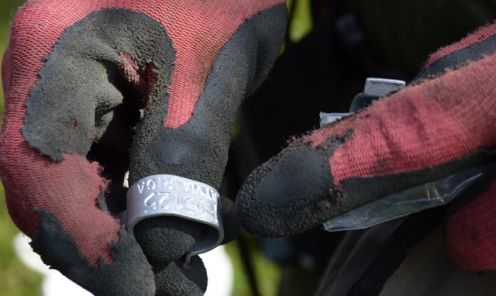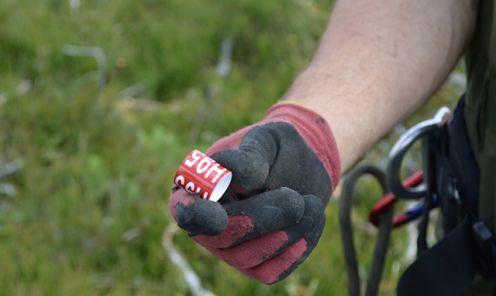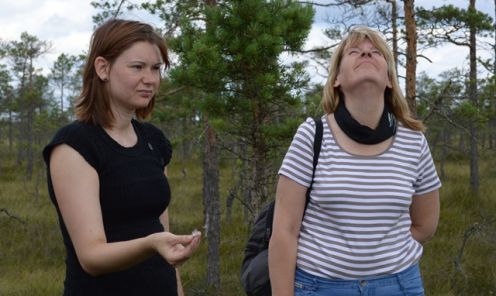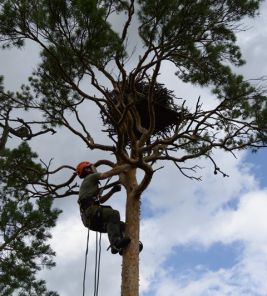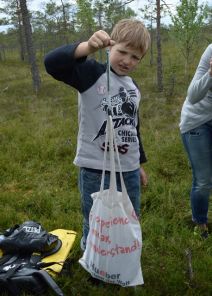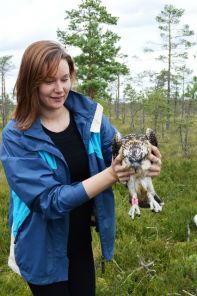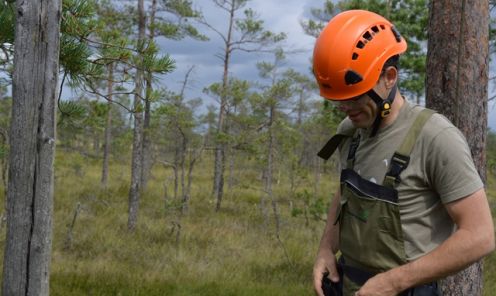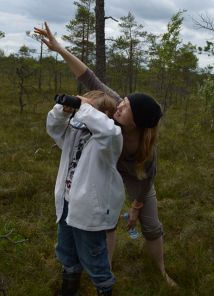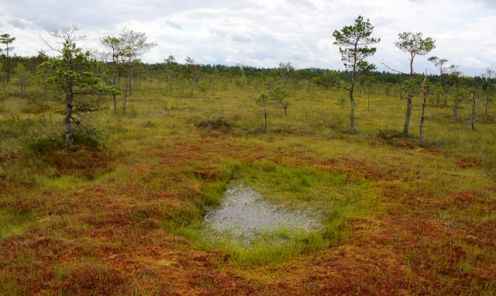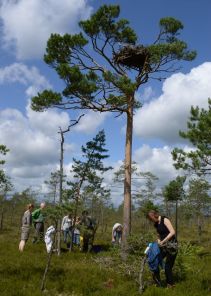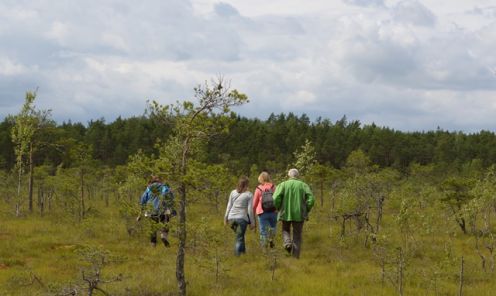July for "Latvian State Forests" environment specialist Aigars Kalvans is a month when a lot of time is spent monitoring osprey nests in order to spot changes in the bird population and, if needed, to perform effective species protection measures.
July 9 was a particularly special day. When going on an inspection of ospreys, the expert was accompanied by three inquisitive winners of the Mammadaba Twitter competition. The meeting place was in Kangari Bog, where an osprey couple calls a 3-meter pine tree home.
"We had to walk quite a distance to reach the nest, but the day was sunny, and we ate wild bilberries on the way, while the expert was telling us why it is necessary to girdle these birds," as one of the winners of the competition recalls.
"We performed ringing on ospreys in order to gather information about their behavior and main migration routes. I am doing my best to capture photos of the old birds, as then it is possible to track whether any of the hatchlings, which I have ringed, has returned to form couples here. So far, I have met about twenty individuals," Kalvans points out.
The first feasible data on the species population dates back to the 1980s, when the territory of Latvia had about 100 couples of such birds. At the moment, more than 200 bird couples have built their homes here, thus, the population has increased more than double during these years. It has been observed that the largest fall in population in the entire world dates back to 1960s, when the largest threat to fish eagles once was pesticides, such as DDT, due to the fact that these species consume only fish. As a result, the number of successful nests declined, because the eggshells had become thinner and the birds squashed them. In the Mediterranean, ospreys are being hunted, but in Latvia, they tend to entangle themselves in nets and thus die.
"Why is there such a huge increase in osprey population?" – asks one of the winners of the Twitter competition. Turns out it is also thanks to humans, who ensure protected territories in the nesting vicinity and build platforms on top of pine-trees, which protect the nest in a windy weather. At the moment, half of the osprey population builds their nests on these platforms.
The male is the one who picks a territory for nesting. For the most part, the nest is built on top of a tree, usually on an old tree with a rounded top, hence, pine-tree. It is important for the bird that the chosen tree is the tallest or has no other trees around, which is why the potential home place is often chosen in bogs and clearings. When the osprey family has settled down, the female's task is to protect the nest, while the male is responsible for food. "Their responsibilities are strictly divided," the expert laughs. "The male hunts for fish. He catches all fish, giving preference to those who live closer to the water surface – pike, carp, etc. The male looks for a fish and with a huge plunge dives into the water," the ornithologist describes the bird's hunting strategy. The hatching period for each hatchling differs only in terms of a few days, however, already after a month, it is impossible to tell which one of them is the youngest.
Upon arriving at a bird nest in Kangari Bog, Aigars is wearing a special outfit, climbing the tree. The nest has three hatchlings that need to be girdled. They are ringed with two rings, one of which is made out of metal – indicating a number and the state, while the other one is red. The red color helps acquire information about the bird from distance by taking photographs.
After the birds are ringed, they are carefully weighed, which this time is done by the winners of the Mammadaba Twitter competition. A month-old hatchling weighs from 1.5 to 1.7 kilograms. This is also the right age for determining the gender – females are usually heavier.
All information about the hatchlings is carefully taken down. Winners of the Mammadaba Twitter competition are grateful for their accomplishment – Latvia now has three girdled ospreys more. All of them have been weighed, inspected, and photographed. May the hatchlings grow fast and return here to build their own nests.
Skaties galeriju:

